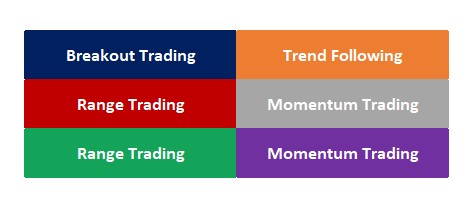
Swing trading is a family of trading strategies that involve buying and holding financial assets for a short to a medium-term period of time, typically ranging from a few days to a few weeks, in order to profit from price movements or “swings” in the market, rather than focusing on long-term investments.
By taking advantage of these trends, swing traders can potentially generate profits while minimizing their exposure to long-term market fluctuations.
Unlike daily trading, which involves opening and closing positions within a single trading day, swing trading involves holding positions for several days or weeks, in order to take advantage of price fluctuations.
Swing trading strategies can be used to trade both long and short positions, depending on the market conditions and the trader’s analysis of the price trends in the market. The main benefit is that traders can potentially generate profits from both rising and falling markets by taking advantage of short-term trends in the market to buy low and sell high, or sell high and buy low, depending on the direction of the trend.
Swing trading can be an effective way to increase the diversification of a portfolio, which can be achieved using various methods including technical analysis, fundamental analysis, news trading, and options trading, and also to exploit short to medium-term trends.
There are various strategies that swing traders use to identify short-term trends in the market. Some of the most popular strategies include:

- Breakout Trading: This strategy involves identifying stocks or other financial assets that have recently broken through a key level of support or resistance. Traders look for a breakout above resistance or below support and place their trades accordingly.
- Trend Following: In this strategy, traders look for stocks or other assets that are trending strongly in one direction and place trades in the direction of the trend. This can be done using technical analysis tools such as moving averages or trendlines.
- Counter-trend Trading: This strategy involves taking trades against the prevailing trend. Traders look for opportunities to buy low and sell high or sell high and buy low.
- Range Trading: This strategy involves identifying stocks or other assets that are trading in a range and placing trades at the upper or lower end of the range, with the expectation that the asset will revert to the mean.
- Momentum Trading: This strategy involves identifying stocks or other assets that are experiencing strong momentum in one direction and placing trades in the direction of the momentum. Traders often use technical indicators such as the Relative Strength Index (RSI) or the Moving Average Convergence Divergence (MACD) to identify momentum.
- News Trading: is a method used by swing traders to profit from news events that affect financial markets. News events can include earnings reports, economic indicators, and geopolitical events. The idea behind news trading is that news events can cause short-term price movements that can be exploited by traders.
Another advantage of swing trading that is worth mentioning, is that it can be less sensitive to sudden volatility explosions and fake breakouts that can occur in the markets, including the crypto markets.
Swing trading strategies are in fact often used in the crypto markets where the high volatility can create opportunities for significant profits in a short period of time. Swing trading can be a useful strategy for traders in the crypto markets: by focusing on longer-term trends and using stop-loss orders, traders can avoid sudden volatility explosions and fake breakouts while also diversifying their portfolios.
Join ThePlatform to have full access to all analysis and content: https://www.theplatform.finance/registration/
Disclaimer: https://www.theplatform.finance/website-disclaimer/



